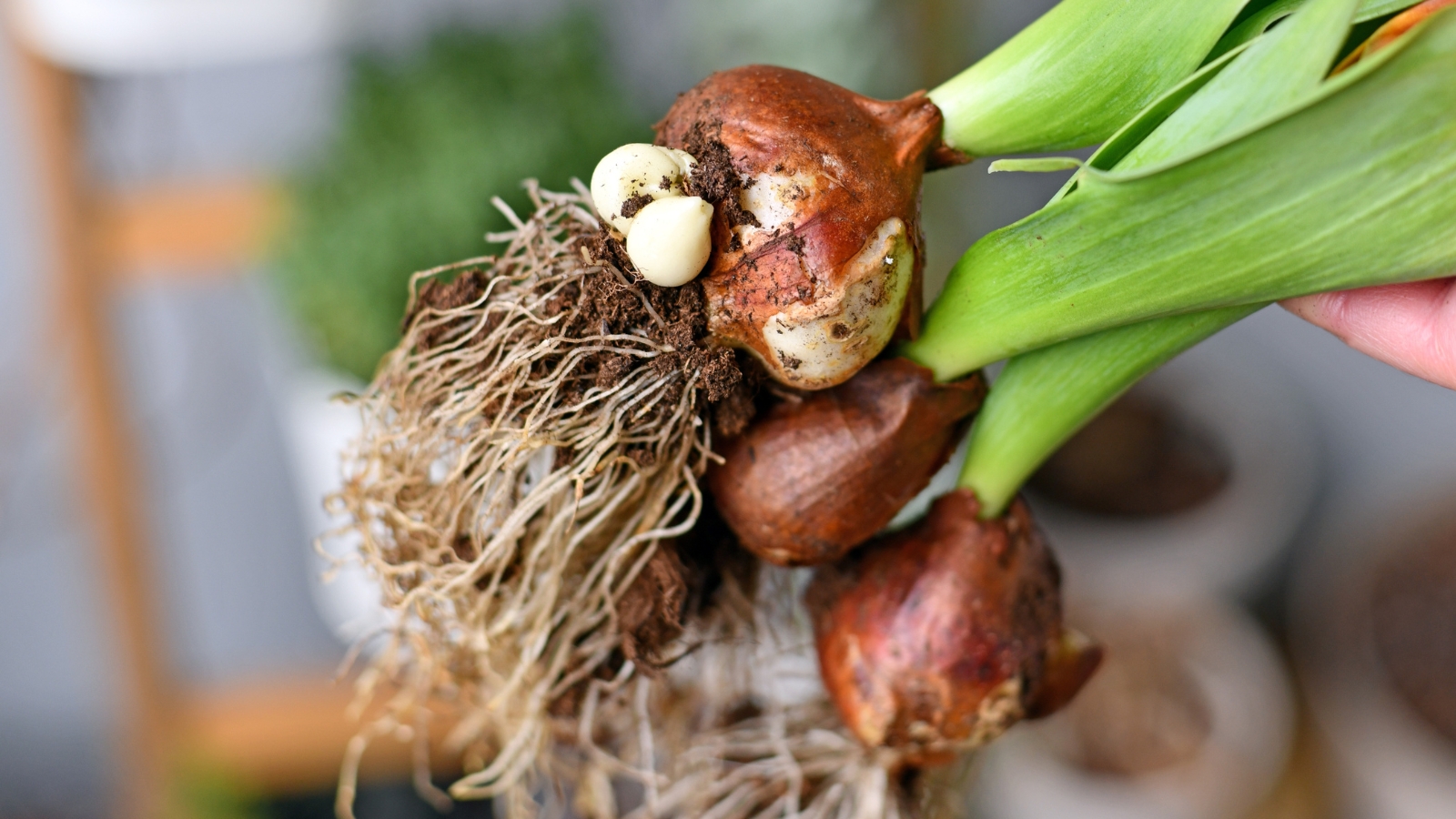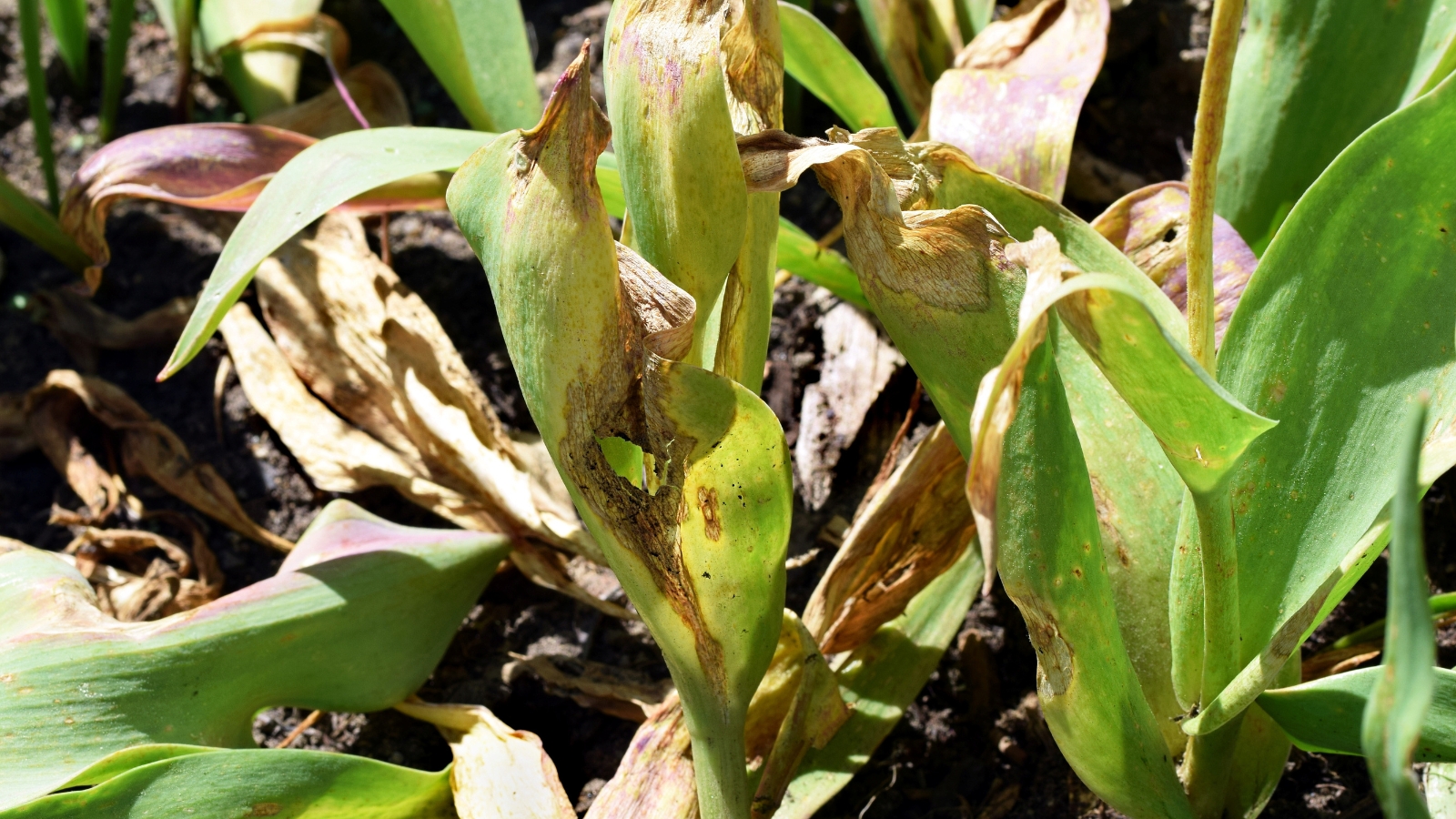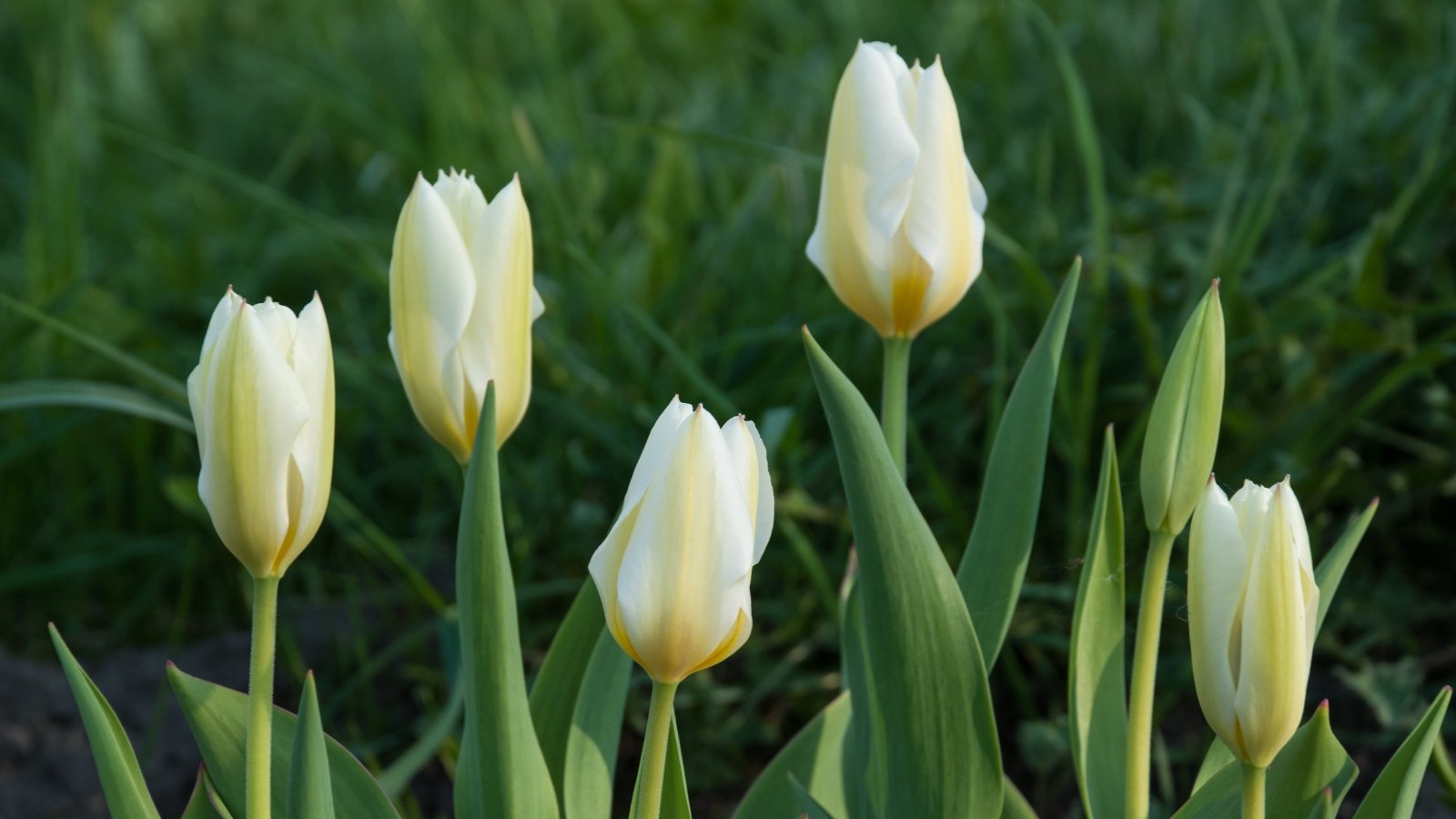[ad_1]
There’s one thing thrilling about planting spring-blooming bulbs inside the fall. The prolonged wait makes it that slightly extra thrilling when these leaves first break through and attain for the photo voltaic. With reference to repute, tulips on a regular basis rank near the best of the report of spring-blooming bulbs.
Over better than 100 years, better than 1000 hybrids have made their debut, each one prettier than the ultimate. They lay declare to simply about every coloration inside the rainbow and loads of petal sorts to be able to choose from. Symbolic of fine love, Fosteriana tulips are a good looking flower to develop in your yard!
Tulipa fosteriana “Fosteriana Tulip” Overview


|
|
|
|
What Is It?


Fosteriana tulips are an early blooming variety. They’re among the many many first to bloom in spring and as well as among the many many largest. Developed from a wild stress from Central Asia, these inside the Emporer assortment are in all probability probably the most well-known.
As tulips go, Fosterianas are sturdy and reliably perennial. Their stature makes them stand out amongst totally different spring-blooming bulbs. They layer fantastically with sunny daffodils and sweet-smelling hyacinths, which often bloom on the same time. Let’s take a extra in-depth check out this spectacular species.
Traits


Fosterianas are normal in flower variety, with cup-shaped, single-petal blooms. What isn’t normal is the dimensions of those blooms. Their defining attribute is the outsized flowers that, when open, can attain diameters between 5 and ten inches all through. That is significantly larger than the frequent, which falls inside the fluctuate of two to a couple inches.
The most typical colors for this species are warmth shades. They embrace pink, crimson, orange, cream, and yellow, with some bi-colored and some solid-colored varieties. They’re a variety of the earliest blooming tulips and are uncommonly big.
Their prime, which is taller than most, makes them further spectacular nonetheless. They’re going to stand extreme above most spring bulbs, which can be implausible for layering. Their prolonged stems and enormous blooms make them very good for the lowering yard.
Native Area


Tulips are native to components of Asia, the Near and Middle East, and the Mediterranean space. Fosteriana comes from a wild tulip current in Central Asia. A variety of the varieties we now have now on the market are hybrids of this wild species.
You might be shocked by the merciless circumstances these crops are accustomed to. They’re primarily native to mountainous areas. They’re tailor-made to chilly winters, well-draining soil, and a significant amount of photo voltaic. Tulips sometimes develop in places the place little else does. Regardless of their delicate look, they’re considerably hardy.
Planting


You can develop tulips from seeds, nevertheless it absolutely takes a really very long time. In the event you occur to plant them from seeds, you won’t see flowers for as many as seven years. Bulbs are typically the best way wherein to go, as they will bloom of their first yr.
The best time to plant tulip bulbs is inside the fall. They need a interval of chilly temperatures, they often gained’t get ample of what they need within the occasion you plant them inside the spring. Relying in your space, September or October are typically good months to plant your bulbs.
Planting sooner than your first frost date is best. This supplies them the prospect to set down some roots sooner than their winter dormancy. Choose a sunny location with soil that has wonderful drainage. Moist soil will rot your bulbs and finish in a poor displaying in spring.
Dig holes about 5 inches deep to your bulbs, and plant them with the flat end down. They sprout leaves from the pointed end. Backfill the holes and cover them with a thick layer of mulch. Water them every few days until the underside freezes. They gained’t need water all through dormancy.
Strategies to Develop


With the right care and within the correct environment, tulips shouldn’t troublesome to develop. Nonetheless, they will act like annuals in hotter areas, so that you just ought to cold-stratify them. Place your bulbs in your fridge for about three to 4 months and plant them in late winter in Zones September 11.
You’ll be able to too cold-stratify earlier inside the yr in these areas after which plant in late fall for late winter and early spring flowers. Aside from that, within the occasion you give them what they need by means of soil, water, photo voltaic, and fertilizer, you will need to have stunning flowers inside the spring!
Gentle


For the biggest, most sturdy flowers, you will need to choose a spot inside the yard that receives as a minimum six hours of photo voltaic. With too little publicity, their stems may develop to be leggy and flop over, and the blooms is perhaps subpar.
The warmer your native climate, the additional needed your sun-shade stability is perhaps. Since they aren’t indicated for Zones September 11, it’ll probably be more durable to develop them there. Nonetheless, within the occasion you plant them early ample and supplies them afternoon shade, you is perhaps further worthwhile.
In cool climates, assure they get as loads mild as chances are you’ll give them. Morning photo voltaic is nice in any environment because of it’s cooler, and Fosteriana tulips are cool-weather crops.
Water


A really highly effective time to pay attention to watering is inside the fall. Correct after planting, it’s essential water every two to a couple days. This will help the bulbs to develop roots which makes them stronger when it comes time to sprout. Keep the soil moist nevertheless not moist or muddy, as it’ll rot the bulbs.
The exception to this fall watering is within the occasion you get a variety of rain that time of yr. As long as the soil stays evenly moist, don’t hassle with watering. When the underside freezes your bulbs will go dormant, and you will stop watering.
Inside the spring, stick with an similar plan. Spring tends to have further rainfall than fall, so don’t water loads if this is the case. As long as the soil is moist, your tulips is perhaps joyful. As quickly as established, tulips don’t need a substantial quantity of water as long as the temperature stays cool.
Soil


Most importantly, Fosteriana tulips need unfastened, well-draining soil. My space has heavy, clay soil, so it is less complicated to plant tulips in raised beds. Since I’m in Zone 9, this moreover means they get the utmost chilly publicity. You’ll be able to too amend your soil in case you may have this problem.
Together with pure matter like compost or peat moss and dealing it in will loosen the soil. It’ll moreover barely lower the pH, and tulips like barely acidic soil, so that’s a bonus.
Temperature and Humidity


I mentioned tulip’s need for cold to bloom optimally. Your bulbs have to be high-quality within the occasion you get ten weeks inside the 30s or beneath (~0°C). In another case, you’ll have to cold-stratify them artificially. Zone 8 is also questionable in case you may have a mid-winter. In Zone 8, I might put them inside the fridge for a month sooner than planting merely to verify.
When temperatures rise into the 50s for just some days (~10°C), your tulips will start to pop up. Fosterianas are early bloomers, so rely on to see flowers start inside the first months of spring.
Fertilizing


Fosteriana tulips fall into the mid-range close to their nutrient needs. You don’t need to put fertilizer inside the holes the place you plant them. Nonetheless, you will need to top-dress the soil with compost.
Fertilize as soon as extra inside the spring as rapidly as they sprout, this time by prime dressing. Use a balanced fertilizer to encourage every inexperienced growth and flower enchancment. A 10-10-10 system is sweet for tulips inside the spring.
Maintenance


In the event you plant your bulbs inside the fall after top-dressing with compost or fertilizer, cowl the soil with mulch. Mulch improves drainage and helps regulate the moisture and temperature of the soil.
After they bloom, the bulbs pull nutritional vitamins from the plant once more into the roots. This step is important because of they retailer that energy for the following yr. After they bloom, deadhead the flowers, decrease your whole flower stem off, and depart the leaves. This redirects energy from supporting the flower, once more down into the bulb.
After the foliage turns brown, decrease all of it the best way wherein once more to the soil. Cowl them with mulch and permit them to leisure up for subsequent yr. You can attempt digging them up and storing them in hotter climates for subsequent yr. This doesn’t on a regular basis have the perfect success cost, nevertheless it absolutely’s doable.
Propagation


Most Fosteriana tulip propagation happens by division considerably than by seeds. Planting from seed is slightly extra time-consuming, and hybrids typically do not breed true from seed. Seeds moreover take roughly 7 years to offer a plant that blooms.
Division


Tulips produce offsets, and you will separate these and develop further crops from them. You’ll have to skinny out your crops every three to 4 years. Unearth the bulbs on the end of summer season or the beginning of fall. That’s when they will have saved up all their energy, and offsets is perhaps sturdy.
Gently take away the offsets from the mum or dad bulbs. Retailer them in a cool, darkish, dry room until temperatures drop consistently beneath the 50s and plant them. It would take just some years for them to retailer up ample energy to bloom, nevertheless it absolutely gained’t take as long as these planted from seeds.
Widespread Varieties


The Emporer assortment of Fosteriana tulips is the hottest and broadly grown. There are one other really gorgeous types as correctly, though. This is a combination of the two!
‘Distinctive Emporer’


‘Distinctive Emporer’ resembles a peony tulip because of it is double-petaled. Nonetheless, it is a Fosteriana and an Emporer. The large, stunning cream double blooms have a golden and inexperienced flame from the underside. They’re someplace between white and yellow and look beautiful as a mass planting or mixed with a brighter coloration.
‘Purple Emporer’


One different Emporer Fosteriana, ‘Purple Emporer,’ is putting with rich, daring, tall crimson blooms. Its sturdy stems make it an outstanding decrease flower. When it opens, there is a black coronary coronary heart. Petals open flat on sunny days and halfway on cloudy days. That’s an award winner and very frequent.
‘Oracle’


‘Oracle’ is pleasurable and splashy, making an unlimited assertion inside the yard, significantly in a mass planting. The tall flowers are glowing gold on the bottom and flaming crimson on the ends. The floor of the petals displays an ombre affect, whereas inside, the two colors are separate. It’s an entire showstopper.
‘Yellow Purissima’


Sunshine in a flower, ‘Purissima Yellow,’ is a winner of the Royal Horticultural Society’s Award of Yard Profit. The entire bloom, from the underside to the rules and each half in between, is golden yellow. It has a strong stem, making it sturdy on windy days, and a terrific decrease flower.
Frequent Points


Tulips aren’t significantly susceptible to pests or sicknesses, nevertheless there are a handful of points to look out for. In the event you occur to can set up them early, your crops have a better probability of being saved.
Pests


Keep an eye fixed fastened out for aphids, as these guys seem to easily pop up all over the place. Tulips won’t be their first different, nevertheless they gained’t flip them down. They depart behind a sticky sweet excrement the place black sooty mould can develop, which gained’t look superb.
Neem oil or horticultural oil work correctly to eradicate aphids. Be careful to not spray when the flowers are open as these can harm pollinators as correctly. A sturdy spray of water can knock populations down, nevertheless be careful to not knock over your tulips.
Slugs and snails come out at night and eat holes in your crops. They’ll do a significant amount of harm within the occasion you don’t eradicate them. Bait and traps work correctly for avoiding these slimy pests.
Tulip bulbs are poisonous to pets, nevertheless some small rodents may take pleasure in digging them as a lot as get a extra in-depth look. Mulching over them will help maintain these away.
Mites, every bulb and spider, may very well be a disadvantage. To steer clear of bulb mites, steer clear of overwatering. Purchase your bulbs from a very good provide to make sure they make it to you in good scenario and uninfected. Spider mites like dry circumstances. Water appropriately and in addition you’ll stave off every of these pests.
Illnesses


Fungal and bacterial rot are the most typical factors. These can lie beneath the soil and decay your bulbs sooner than they’ve a possibility to sprout. In case your crops don’t sprout in spring, there’s an outstanding probability they rotted over the winter.
There are two totally different widespread sicknesses that impact these perennials. Tulip-breaking virus is lethal, and displays as mottling and streaking on flowers and foliage. In the event you occur to find this, pull them and eradicate them away from totally different crops. Do not compost them.
Tulip fire is a fungal problem introduced on by botrytis, a fungal pathogen. The foliage could have a burned look and possibly mould spots. As soon as extra, within the occasion you uncover this, take away them and eradicate them. You don’t want it to unfold to totally different flowers or your compost pile.
Repeatedly Requested Questions
Plant these in with daffodils, hyacinths, and totally different shorter bulbous perennials. They stand tall and make an announcement in a combination of flowers.
No, Tulip bulbs are very poisonous to folks and pets. These aren’t good for a yard with a canine that digs.
An extreme quantity of heat is the most definitely wrongdoer. Underwatering is often not as detrimental.
[ad_2]
Provide hyperlink

